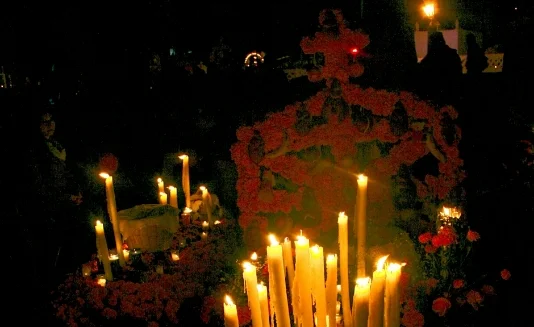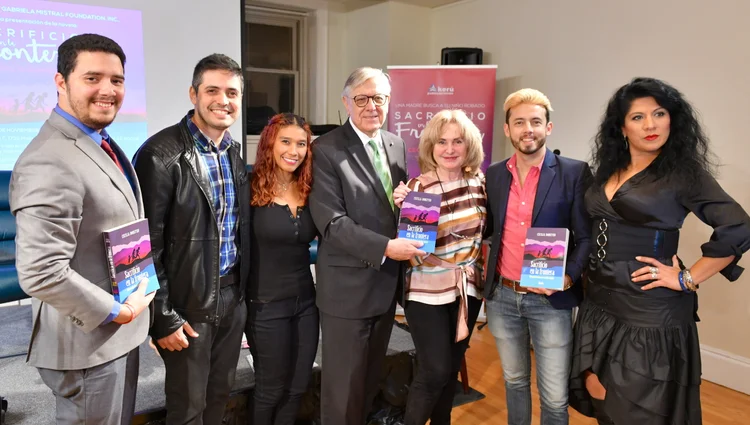My research for Sacrifice
My novel, “Sacrifice at the Border” is the result of thirty years of interviewing hundreds of U.S. Latino immigrants who came here seeking a better life for themselves and their children. The interviews were used for film projects and videos for various clients.
MY MEXICAN RESEARCH
My travels in Latin America throughout the years and getting to know the people and the customs contributed much to my novel, and gave me the material I needed for the writing Sacrifice on the Border. My trips to Mexico were especially valuable.
In one trip to attend friend's wedding there, where I was honored to be a madrina, I learned a lot about the town of Quesería, about Queserinos, the food, the setting, and much more. Helping my friend with her wedding preparations and being a part of the wedding rituals taught me much about Mexican bodas.
As a "madrina" at my friend Mary Chuy’s wedding in Quesería, near the city of Colima in Mexico. It was a wonderful two weeks at Mary Chuy’s home while helping her with her wedding preparations. I am standing on the far right.
On another trip I spent a week accompanied by members of my Mexican family visiting towns and villages that celebrate the Day of the Dead (Día de Muertos or Día de los Muertos). I got to see the Catrinas, ate delicious pan de muertos, sugared skulls and learned about many symbols important to the local culture. I spent the night in a cemetery sitting on a tomb by the side of a family celebrating the death of their beloved ancestors.
Getting ready to celebrate the Day of the Dead in Michoacán, México.
Lighting a candle to a beloved ancestor in the cemetery.
At the Panteón, or cemetery on the Day of the Dead in Michoacán, México.
The beautiful portrait of la Virgen de Guadalupe in the Basilica in her name.
As I traveled across the country I realized the enormous importance of La Virgen, especially La Virgen de Guadalupe. When I visited her Basilica in Mexico City, I was moved by the story of her apparition and by the devotion of people of all ages. Everywhere you go in Mexico, la Virgen de Guadalupe’s picture is placed in a prominent place in schools, banks, stores and other public buildings, as well as in private homes.
In Michoacán, university students dressed up as catrinas and catrinos while celebrating the Day of the Dead.
I was born in Chile and raised as a Latina. Latinos from different countries all share the language, many customs, and basic values. For example, family is all important to us. We often place that value above others that the mainstream culture might consider important. It’s a source of great strength. We also share ways of interacting in society, of responding to love, hate, fear, happiness, and other emotions.
But Latinos from different areas of Latin America also do have our differences. Our accents vary, as do some of our expressions for everyday things. Many of our foods, music and rituals are the same, or similar, but many are not.
A good comparison would be the United States and Britain. Same language, many of the same customs. But also many subtle differences.
Latinos who live within the borders of the U.S. have distinct differences too depending on where they are from. Latinos who have lived in the U.S. for a while, or who have been here for hundreds of years have a unique culture all their own.
In Sacrifice at the Border , the challenge was to include our common values and similarities, as well as our differences. I wanted the novel to appeal to people from Latin America, Latinos who live here, as well as to mainstream America.
With a beautiful catrina on the Day of the Dead.
MY LIFELONG RESEARCH
All of the experiences in my life were research for the writing of my novel Sacrifice at the Border.
Writing feature magazine stories taught me to observe people and places. Writing creative portraits of artists, scientists, politicians, and celebrities honed my interviewing skills, and taught me how to get people to open up their hearts to me. As I listened to tales of sadness, fear and disappointment, as well as of hope, courage and joy, I learned about life.
Writing screenplays helped develop my ability to create drama and depict good characters. Working with the Hispanic community in the U.S. drew me closer to it, and gave me a first hand view of the challenges we face. There was one specific project that taught me more than the rest.
Directing a young girl on the set in Espinal, Colombia. The film was based on my dramatic script, "La Muñeca.”
LA FAMILIA UNIDA CAMPAIGN FOR THE CATHOLIC CHURCH
The Catholic Church hired me to create a campaign to reach out to Latino immigrants and would talk about the challenges they face in the U.S. while also imparting a message of love and hope. The first day on the project, they handed me a stack of documents. They were part of a year-long study of immigrants' lives: what had brought them here, and what they hoped and dreamed about. I was to use this to create dramatic fictional scripts for national media distribution. The campaign I created was called The United Family, La familia unida, in Spanish.
Directing on of my dramatic scripts on the set in Colombia.
I then set off to interview people who had crossed and border and had then had to adapt to a new culture. I had been asked to include issues that were serious: gang violence, domestic violence, drugs, alcohol, discrimination, racism, among many others. The scripts were to be fictional, and include the researched themes, while providing a positive message. It was a challenge.
I created a series of over 50 short dramatic scripts, which I then produced and directed for national broadcast. The stories were portrayed by Latino actors. It was a wonderful experience to write dramatic stories and then direct the talent. It gave me the chance to see how my stories, and especially my dialogue really worked.
Once the scripts were transformed into television programs and began to air, the response from television and radio stations was extremely positive. Network programmers from Spanish-language neworks like Univision and Telemundo aired them over and over, and asked for more. The audience was calling in to talk about them, discuss the issues, tell their own stories, inspired by what they saw on the screen.
Originally programmed for a year, the campaign extended to ten years, and aired not just in the U.S. but in 23 Latin American countries, broadcast by Spanish CNN. The scripts and videos won a total of 60 awards at major film and video festivals.
Directing three actors on the set for the filming of the TV spot, "El Boxeador" (The Boxer) in Bogotá, Colombia.
The best part was that this campaign put me in contact with hundreds of immigrants, both newly arrived and in the country for years. They told me amazing stories. Some I interviewed were sad, scared, and angry. Others, fulfilled, happy, and enlightened. They were of all ages, and came from all walks of life. They told me where they were from, why they had risked crossing the border, why they had made the decision to leave their homes. What their experience had been upon arriving.
The hundreds of people I interviewed are reflected in my novel's plot and characters. I met many young women like Yoali, the main character and Frank, the policeman who falls in love with her. I met a few like La Coyote and El Gato, the traffickers who try to save Elisito from a horrible fate. I never did meet someone as evil as Guayo but I know evil exists and that there are human beings capable of extreme violence, heartlessness, and cruelty.
Receiving a special blessing in the church of La Virgen de la Soledad in Mexico,
Accompanying the dead at the cemetery.
In a guitar store in Mexico. Yoali is a songwriter and singer, so looking at some of Mexico’s beautiful guitars was important,













